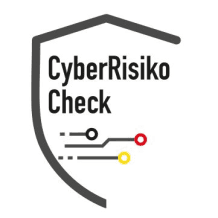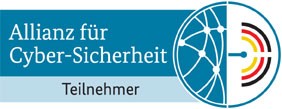Network Access Control (NAC) is a central element of modern IT security strategies that helps companies and organizations to control, manage, and secure access to their own networks. In a time when cyber attacks are becoming increasingly sophisticated and the complexity of modern IT infrastructures is constantly increasing, NAC offers a systematic approach to prevent unauthorized access and to close potential security gaps early. The following text comprehensively illuminates the use of Network Access Control, its technological foundations, practical application examples, as well as the challenges and future developments in this area.
What is Network Access Control (NAC)? Network Access Control is a security concept that aims to monitor and control the access and activities of devices within a network. This measure is employed to ensure that only authorized devices and users can access sensitive systems and data. NAC solutions utilize a variety of technologies and protocols to identify, authenticate, and take action when security policies are violated. By using NAC, IT administrators can implement policies that restrict access to the internal network solely to trusted devices, while non-compliant endpoints are redirected to an isolated network segment.
How does Network Access Control work? The operation of NAC is based on a combination of authentication, authorization, and continuous monitoring. Initially, a device that wants to connect to the network must first authenticate itself. This authentication process can take various forms – ranging from traditional username/password prompts to certificate authentication or the use of multi-factor authentication methods. Once the identity is confirmed, the NAC system checks whether the device complies with the established security policies. In this step, aspects such as current security updates, installed software, or the presence of antivirus programs are assessed.
Following authentication comes authorization. Here, the NAC system decides what access the device receives – whether it is full access to the network, a restricted guest access, or even complete blocking. This happens in real-time and can be dynamically adjusted as the security status of the device changes. Continuous monitoring ensures that even ongoing connections are monitored. If a device is later compromised or violates security policies, the NAC system can immediately intervene, revoking access or moving the device to an isolated security segment.
Why is NAC essential in modern networks? The increasing complexity of modern IT infrastructures and the proliferation of mobile devices present new challenges for companies. BYOD (Bring Your Own Device) and remote work have led to more devices – often insecure – being present in corporate networks. Without stringent access control, such devices could be exploited as an attack vector. NAC offers a flexible solution to keep track of all connected devices and ensure that security policies are consistently adhered to. In addition, it allows for real-time response to threats, which is particularly important in critical environments like the financial sector or healthcare.
What benefits does Network Access Control offer? The implementation of NAC brings numerous advantages that go beyond mere access control. One of the primary benefits is the improvement of the overall security of the network. By strictly controlling and monitoring all devices connected to the network, potential risks can be minimized and security incidents prevented. Moreover, NAC supports compliance with legal regulations and internal security policies, as it allows for comprehensive documentation of all accesses. Companies also benefit from increased transparency regarding network traffic. Through continuous monitoring and logging, administrators can detect unusual activities early and take appropriate countermeasures.
How is NAC implemented? The implementation of an NAC system requires careful planning and a comprehensive analysis of the existing network architecture. First, it must be determined which end devices should be integrated into the network and what security policies apply to the respective device types. Subsequently, the infrastructure is configured to ensure that connections can run centrally through the NAC server. Modern NAC solutions often offer flexible deployment models that can be realized both on-premise and cloud-based. Transitioning to a NAC-supported network is not always trivial, as legacy systems and older devices often require adjustments. In such cases, it is advisable to choose phased implementation processes to avoid jeopardizing ongoing operations.
What challenges exist in the implementation of NAC? Despite the numerous advantages, challenges must also be considered in the implementation of NAC. One of the biggest hurdles is compatibility with existing systems. Often, older devices or systems that are not designed for the strict security requirements of modern NAC solutions need to be retrofitted or replaced. This can entail significant costs as well as organizational adjustments. Additionally, user acceptance plays an important role. In some cases, users may be skeptical of new security measures, especially when they disrupt their usual workflow or require additional authentication processes. Comprehensive training and transparent communication are crucial to ensure acceptance and correct usage.
What technologies and standards are used in NAC? Modern NAC solutions integrate a variety of technologies and standards to meet the varying requirements. In addition to traditional authentication protocols like 802.1X, advanced security measures such as certificate-based authentication or biometric methods are frequently employed. Furthermore, technologies for device categorization and vulnerability detection are used, enabling detailed analysis of end devices. The integration of network scanners and Intrusion Detection Systems (IDS) is also utilized in many solutions to ensure a comprehensive picture of network security. The standardized communication between various components plays a central role in enabling seamless and automated control.
How does NAC support compliance with regulations? In many industries, companies are subject to stringent legal regulations and compliance guidelines that govern the protection of sensitive data and access to critical systems. NAC can serve as a supportive tool by transparently documenting and controlling access to network resources. By implementing detailed logging and regular audits, deviations from established security standards can be identified early. This not only allows for timely responses to security incidents but also facilitates easy proof of compliance to regulatory authorities and internal audits. The combination of technical security measures and detailed reporting thus creates a robust foundation for meeting demanding compliance requirements.
What role does NAC play in the mobility and cloud strategy of companies? With the increasing shift of work processes to the cloud and the growing use of mobile devices, the security paradigm in companies is also changing. NAC plays a crucial role in this context, as it regulates access to corporate resources from both internal and external locations. Through centralized monitoring, it can be ensured that the same security policies apply regardless of location. In particular, in hybrid network architectures where cloud services and local systems coexist, NAC takes on the task of implementing a unified security strategy. The flexible integration of NAC into diverse IT environments enables adaptive and location-independent protection, meeting modern demands for mobility and flexibility.
What best practices should be considered in the implementation of NAC?
When introducing NAC, there are several best practices that help maximize the success and effectiveness of the measures. First, it is essential to conduct a comprehensive network analysis and identify all relevant endpoints. Implementation should occur in phases to detect and resolve any issues early. Another key point is the clear definition of security policies and access rights. These policies should be regularly reviewed and adjusted to current threat scenarios and technological developments. It is also advisable to implement automated processes and d
Network Access Control (NAC) in Germany: Current Developments
The importance of network access control (NAC) in Germany is continuously growing. According to recent studies by the Federal Office for Information Security (BSI), German companies are increasingly affected by cyber threats. The Bitkom Association reports that 84% of German companies have been victims of cyberattacks in the last two years.
Particularly in the area of network access control (NAC), the following trends are observable:
Increasing investments in preventive security measures
Heightened awareness for comprehensive security concepts
Integration of network access control (NAC) into existing compliance frameworks
EU Compliance and Network Access Control (NAC)
With the introduction of the NIS2 directive and tightened GDPR requirements, German companies must adjust their security strategies. Network Access Control (NAC) plays a central role in meeting regulatory obligations.
Important compliance aspects:
Documentation of security measures
Regular review and updates
Proof of effectiveness to regulatory authorities
Practical Implementation in Corporate Everyday Life
The integration of network access control (NAC) into corporate everyday life requires a structured approach. Companies generally benefit from a step-by-step implementation that considers both technical and organizational aspects.
Think of network access control (NAC) as insurance for your company: The better prepared you are, the lower the risk of damage from security incidents.
Further Security Measures
For a comprehensive security strategy, you should combine network access control (NAC) with other security measures:
Vulnerability Management - Systematic vulnerability management
Penetration Testing - Comprehensive security tests
Security Hardening - Employee awareness
Incident Response Plan - Preparation for security incidents
Conclusion and Next Steps
Network Access Control (NAC) is an essential component of modern cybersecurity. Investing in professional network access control (NAC) measures pays off in the long run through increased security and compliance.
Would you like to optimize your security strategy? Our experts are happy to advise you on the implementation of network access control (NAC) and other security measures. Contact us for a non-binding initial consultation.
🔒 Take action now: Have your current security situation evaluated by our experts
📞 Request a consultation: Schedule a free initial consultation on network access control (NAC)
📋 Compliance Check: Review your current compliance situation
📌 Related Topics: Cybersecurity, IT Security, Compliance Management, Risk Assessment




